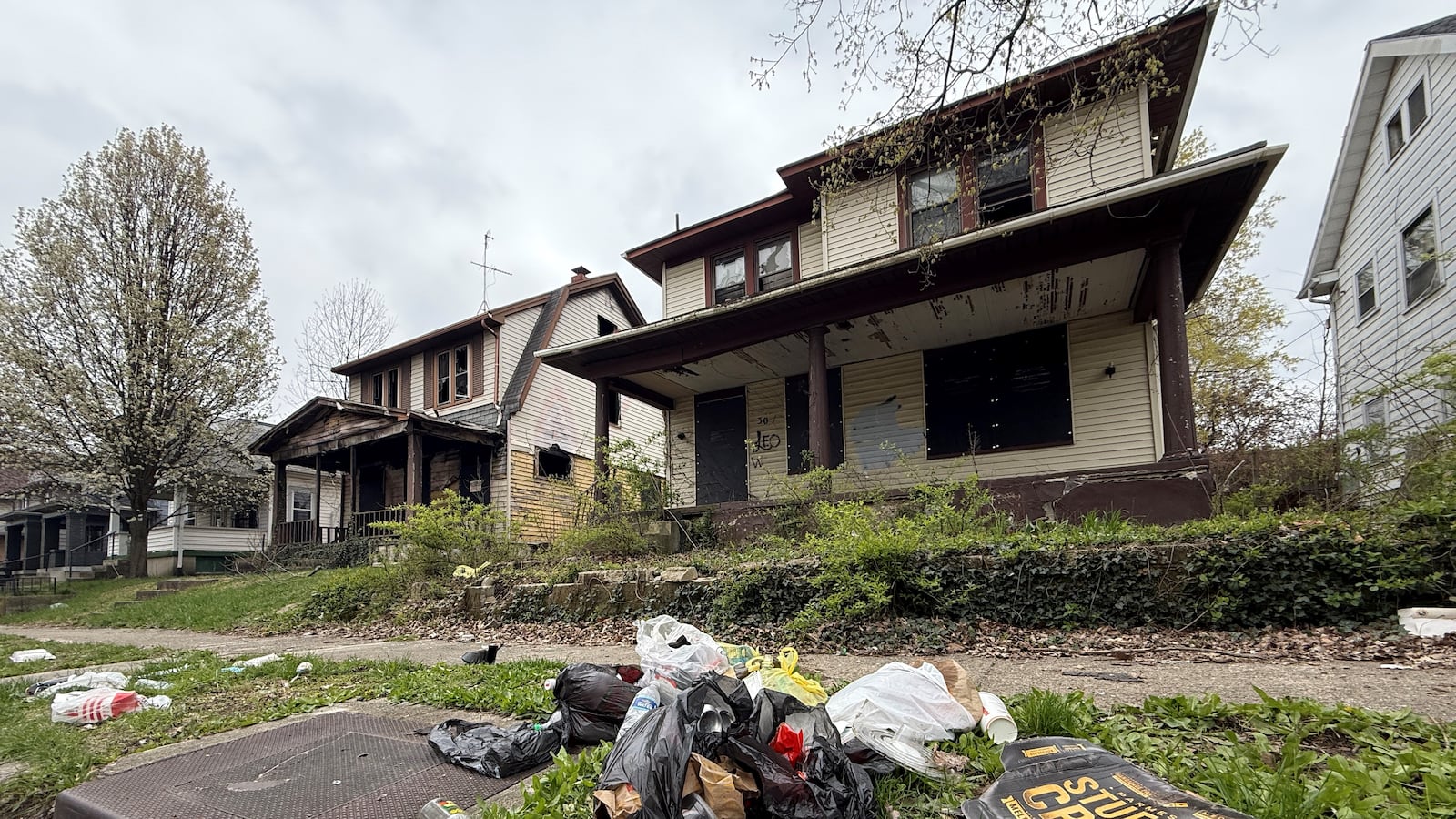In a sit-down interview with the Dayton Daily News, Afzal talked about how his department is working to reduce violent crime in the neighborhoods where residents say gunshots are a nonstop occurrence.
Credit: Bryant Billing
Afzal said the department has shifted to focus manpower on violent crime. Police say a small number of people are responsible for a substantial share of the violent crime in the city.
“We do weekly violence deterrence initiatives, which is identifying where crime is occurring and then to try to identify offenders and give that intel to our detectives, our officers and work with Ohio State (Highway) Patrol aviation assets to actually target enforcement in a very micro area and do that over a long period of time and then make an assessment to see, OK, is that curbing the crime,” Afzal said.
“It’s not going to change the underlying conditions that leads to some of the social disorder, but there are too many good people living in those areas that get affected by a few bad apples.”
The chief said the police department has created a real-time crime center where police personnel can relay information to patrol officers that they gather from sources like downtown’s security camera system and automated license plate readers around the city.
Credit: Bryant Billing
He said staff in the center look for trends or patterns that patrol officers might not notice given that they receive a constant flow of information and alerts when they are out in the field.
Afzal identified staffing as a challenge. He said it would help if the Dayton Police Department could increase its staffing to get to 365 sworn officers, which has been the city’s goal for years. The police department currently has about 322 sworn officers, though a recruit class is going through the police academy.
Credit: Bryant Billing
Afzal said higher staffing levels would allow the police department to assign officers to teams focused on specific law enforcement objectives, or they could be deployed to areas in the city that are crime hot spots.
Two-thirds of West Dayton residents and more than three-quarters of residents who live in the northwest geography say they are somewhat or very concerned about gun violence in their neighborhoods, says the recently released results of the 2024 citywide survey.
Credit: Bryant Billing
That compares to about 54% to 58% of residents of northeast and southeast Dayton who have the same level of concern. The survey also found that about half of survey respondents citywide who identified gun violence as a problem said they think the issue is being addressed poorly.
Afzal said he hopes that a new peace campaign spearheaded by Dayton Mayor Jeffrey Mims Jr. and a new violence interruption program that is expected to launch later this year will help break up local cycles of violence.
Violence interruption
The chief said law enforcement cannot solve community violence on its own.
Afzal said most violent crime involves people who know each other and have some social connection, even if they do not have a close relationship. He said violent crime between strangers is much less common.
Dayton is working with a group called Cure Violence Global to develop a violence interruption program that supporters say has led to promising results in many other cities, including large declines in shootings, shooting victims, killings and retaliation killings.
This program, which treats violence as a contagious disease, will seek to connect people at a high risk of violence with services and supports such as education, job training and drug treatment.
A community-based organization will train and deploy “violence interrupters” who will work with high-risk individuals to try to identify and mediate conflicts in the community that have the potential to lead to bloodshed.
Asked how confident he is that the violence prevention efforts will make a difference, Afzal said: “I’m not going to make any promises, but I can tell you the data tells us that approach has worked when applied properly.”
Credit: Bryant Billing
Afzal also said he believes that new investments in the community will make a difference, like some of the projects taking place in the Miami Chapel neighborhood.
The DeSoto Bass Courts public housing complex, which is in the neighborhood, is being torn down and replaced with new, less dense housing units.
Miami Chapel is one of the focus areas for Dayton Recovery Plan investments. The plan is the city’s spending blueprint for its $138 million in federal COVID relief funds.
Using COVID relief funds, the city is building a new police station on West Third Street by the Wright factory site, which is being targeted for redevelopment. Officials say this hopefully will reduce police response times, while providing a stronger police presence in that part of the city.
The city has provided funding to help make lots of home repairs to dozens of houses in Miami Chapel, Edgemont and other neighborhoods. The city also is spending millions of dollars to tear down vacant and blighted properties all across the city, including in the neighborhoods with high levels of gun crime.
Afzal said in every major city, the commonality among neighborhoods with high violent crime is “economics.”
“Until we address that at a macro level, and a micro level, you’re not going to get out of the jam we’re in,” he said. “But obviously we do our our part in trying to put strategies in there to at least address things in the short term.”
DAYTON GUN VIOLENCE
A project from the Dayton Daily News

A Dayton Daily News investigation found several neighborhoods in west Dayton have been hot spots for violent crime for more than a quarter century.
About the Author
